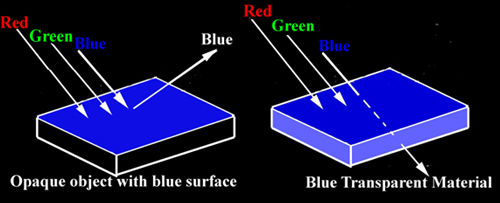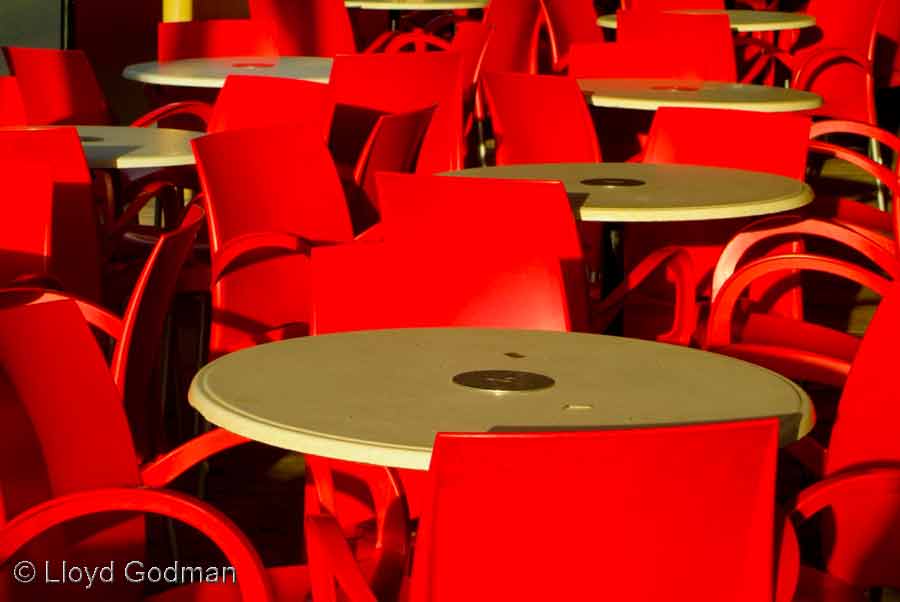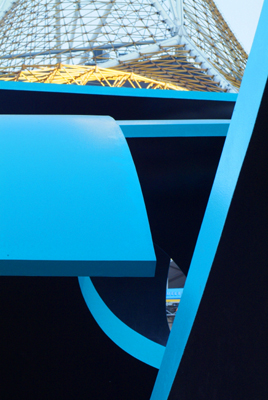Sequence viewing > Light & Lighting - Resource - ©
Lloyd Godman
Light in Photography - LIGHTING - The
Colour of Materials
In
colour photography, as with black & white, most materials reflect
more of some wavelengths than others wavelengths, thus taking on the
colour most strongly reflected. The remaining wave lengths are absorbed
into the material. A truly neutral white or grey surface will reflect
the light (incident light) and not alter the colour, ie. the distribution
of wavelengths present in the incident light.
A
surface that has only a slight tendency to flavor one wavelength in
reflection will appear white or grey with a slight colour cast. Another
surface, say blue, that reflects a much higher proportion of one wavelength
and absorbs others will present a more vivid colour to the eye - a
high saturation of colour.

With a transparent coloured surface, such as blue coloured glass,
the wavelengths transmitted most freely determine the colour, as other
wavelengths are absorbed into the material. A parallel can be drawn
between this effect and the use of lens filters.


Want to learn more? - do a workshop or one on one with Lloyd Godman
|